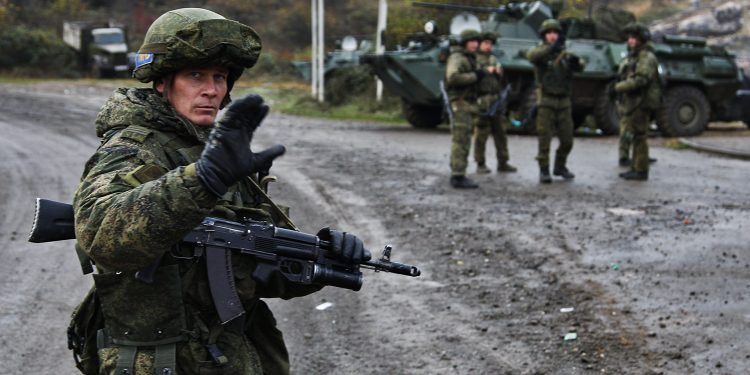Moscow: From Chechnya to Syria, via Ukraine, the Russia of Vladimir Putin has been involved in a string of wars since the fall of the Soviet Union in 1991. After months of soaring tensions, Putin ordered his troops Monday to deploy in Ukraine’s self-proclaimed republics of Donetsk and Lugansk. This move came hours after recognising independence of Donetsk and Lugansk.
The scope and the calendar for the deployment is still unclear, but the decisions have fuelled fears of a major escalation in Ukraine. Russia has amassed more than 1,50,000 soldiers along Ukraine’s border, according to Washington and Kyiv, and up to 1,90,000 including separatists.
Here is a recap of the wars that Russia has been a part of:
Two wars in Chechnya
In late 1994, after tolerating the Caucasus republic’s de-facto independence for three years, Moscow had sent in troops to bring Chechnya to heel. But they meet fierce resistance and were withdrawn in 1996. They were again sent back in in October 1999 under Prime Minister Vladimir Putin. Later on Putin was elected president.
Also read: Putin asks for permission to use force outside Russia
Their mission is an ‘anti-terrorist operation’, in response to deadly attacks in Russia blamed by Moscow on Chechens and an attack by its separatists on neighbouring Daghestan.
In February 2000, the Russian army took the Chechen capital Grozny, razing it to the ground with artillery and air strikes.
The guerrilla movement however, continued. In 2009 the Kremlin brought an end to its operation, after two wars in which tens of thousands died on both sides.
Lightning Russia-Georgia war
In August 2008, Russia and Georgia went to war for five days over South Ossetia, a small separatist Georgian region. In the night of August 7 to 8, the Georgian army launched a deadly offensive to retake control of South Ossetia, of which it had lost control since the crumbling of the Soviet Union and a war in the early 1990s.
However, Russia immediately responded. It sent troops into Georgian territory and quickly inflicted a resounding defeat on the ex-Soviet republic. The lightning conflict claimed several hundred lives.
Conflict in Ukraine
In 2014, after the pro-European Union revolution in Ukraine which forced out Kremlin-backed leader Viktor Yanukovych, Russia retaliated by annexing the Crimea peninsula. However, the annexation is not recognised by the international community.
A separatist uprising then emerges in Donetsk and Lugansk in eastern Ukraine on the border with Russia. They declared independence, unleashed an intense armed conflict with Kyiv.
Kyiv and the West say Russia instigated the eastern uprising and poured arms and troops across the border to bolster them. Moscow however, denied the accusations, while acknowledging the presence of Russian ‘volunteers’.
The conflict has largely abated since 2015 and the signature of the Minsk Peace Agreements.
But, since late 2021, Russia has stepped up military manoeuvres, by air, land and sea, around Ukrainian territory. It has stationed more than 1,50,000 soldiers on its border, according to Western estimates.
The conflict in Ukraine has left more than 14,000 dead since 2014.
Intervention in Syria
Russia deployed its military in war-torn Syria in 2015 in support of the forces of President Bashar al-Assad. Russia’s intervention, especially with its air power, changed the course of the conflict in Assad’s favour. It allowed the Damascus regime to clock up decisive victories, seizing back territory that had been lost to rebels and jihadists.
Moscow has two military bases in Syria: the aerodrome in Hmeimim in the northwest and the naval port of Tartus, further south. More than 63,000 Russian military personnel have deployed to Syria, as per officials in Moscow.






































